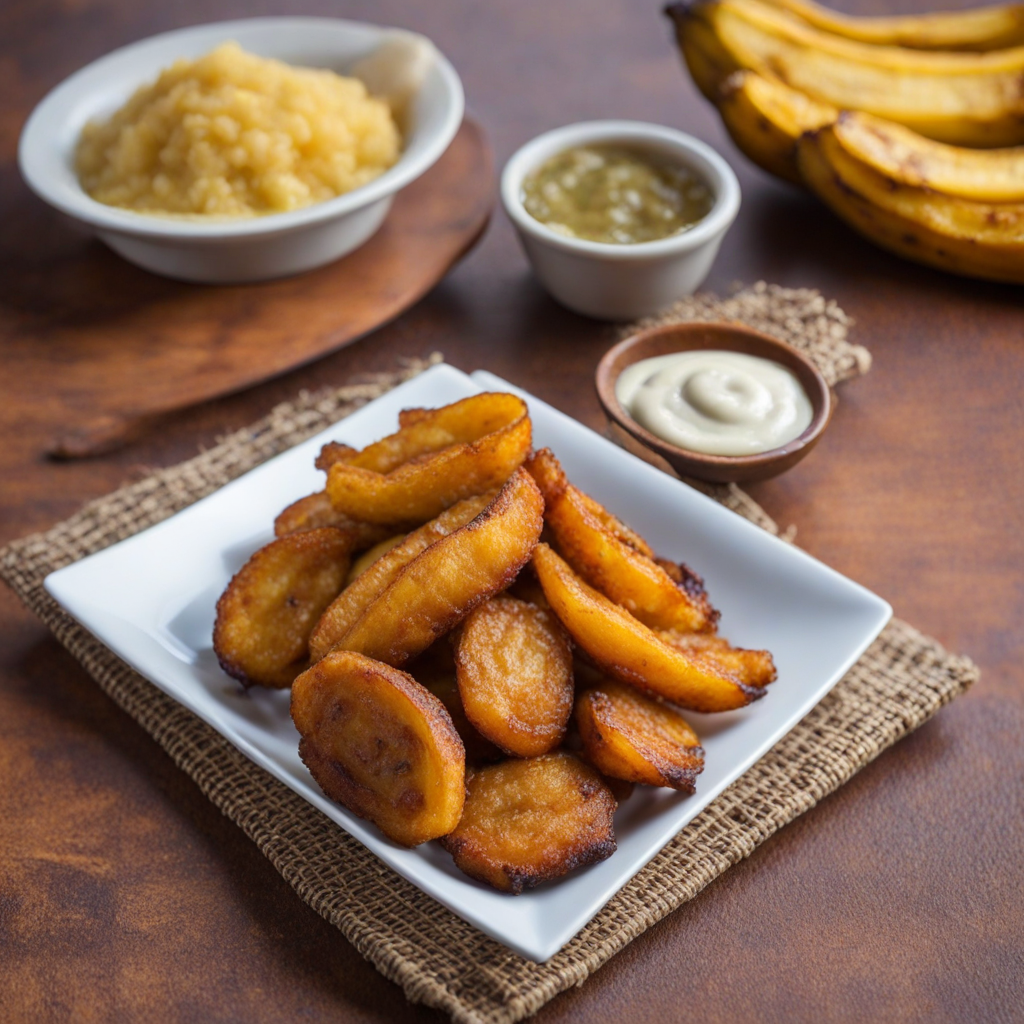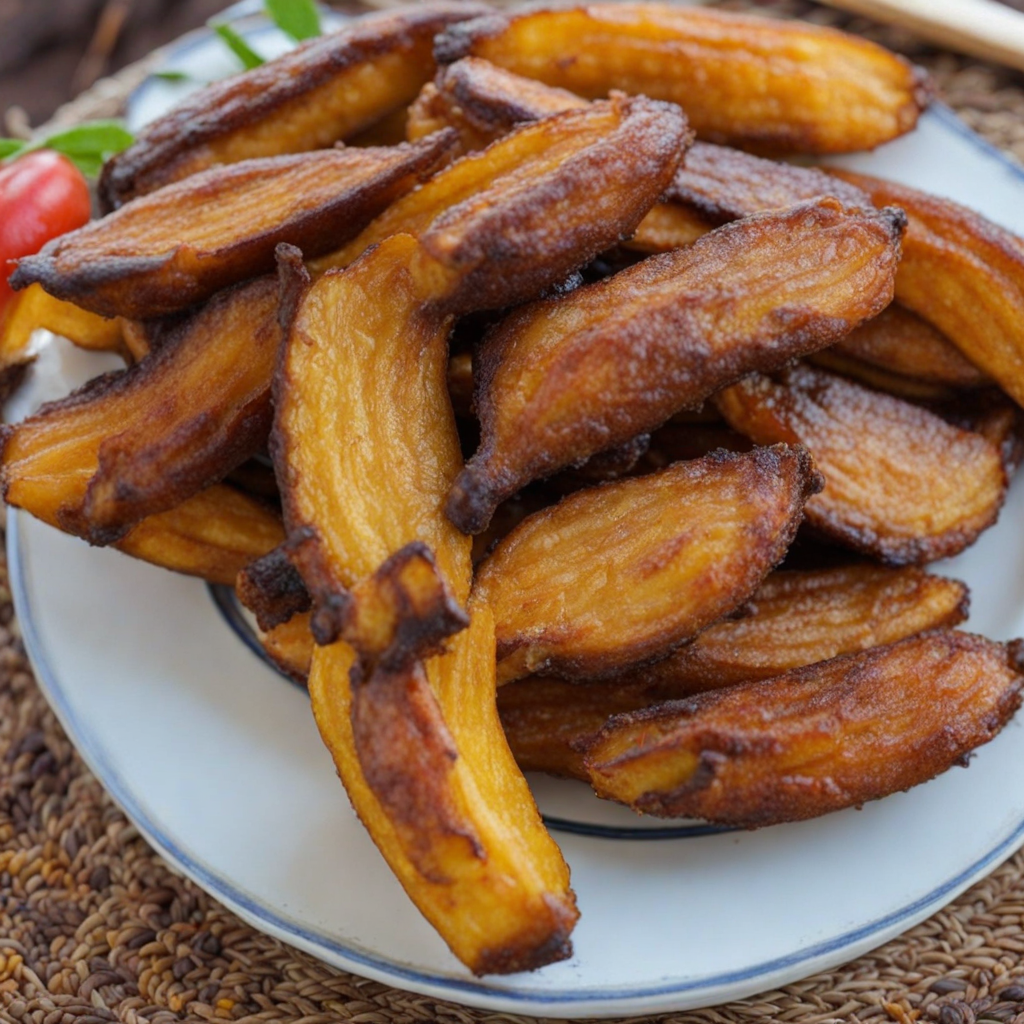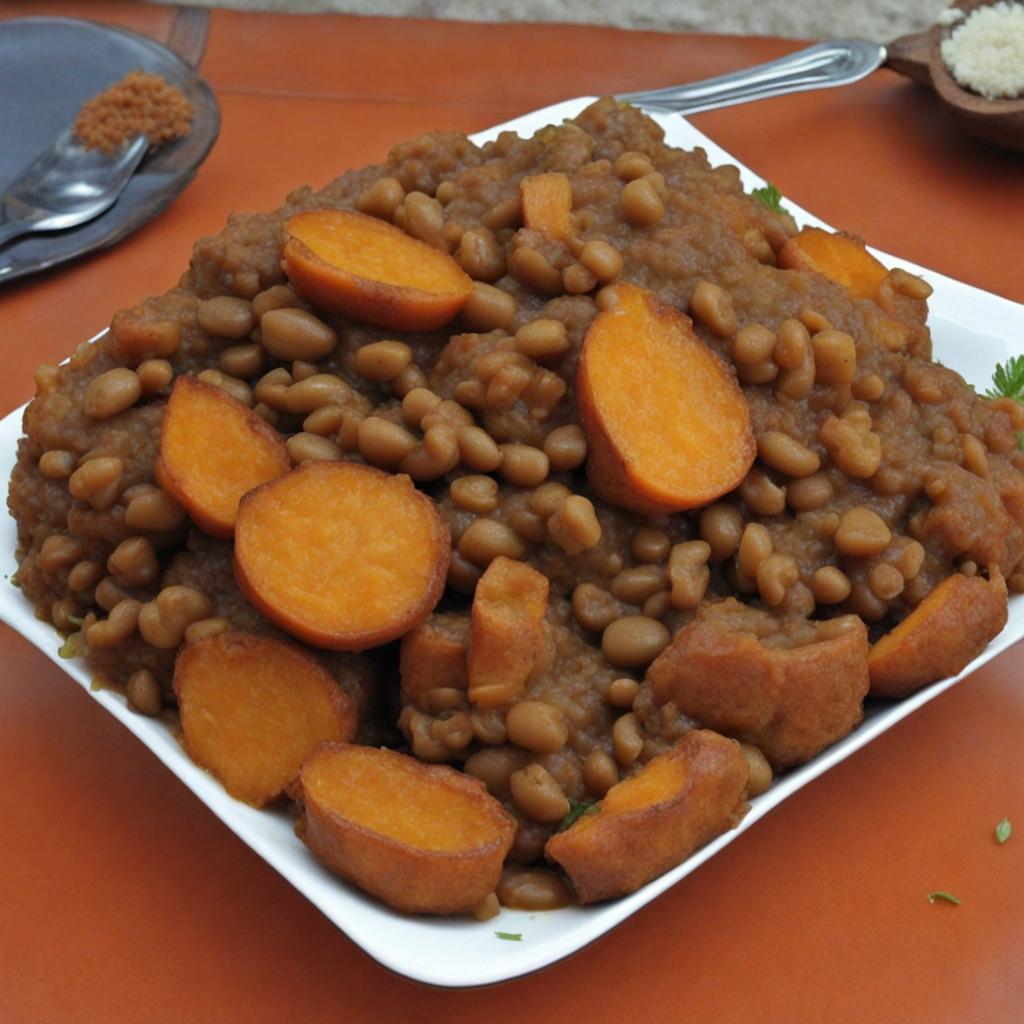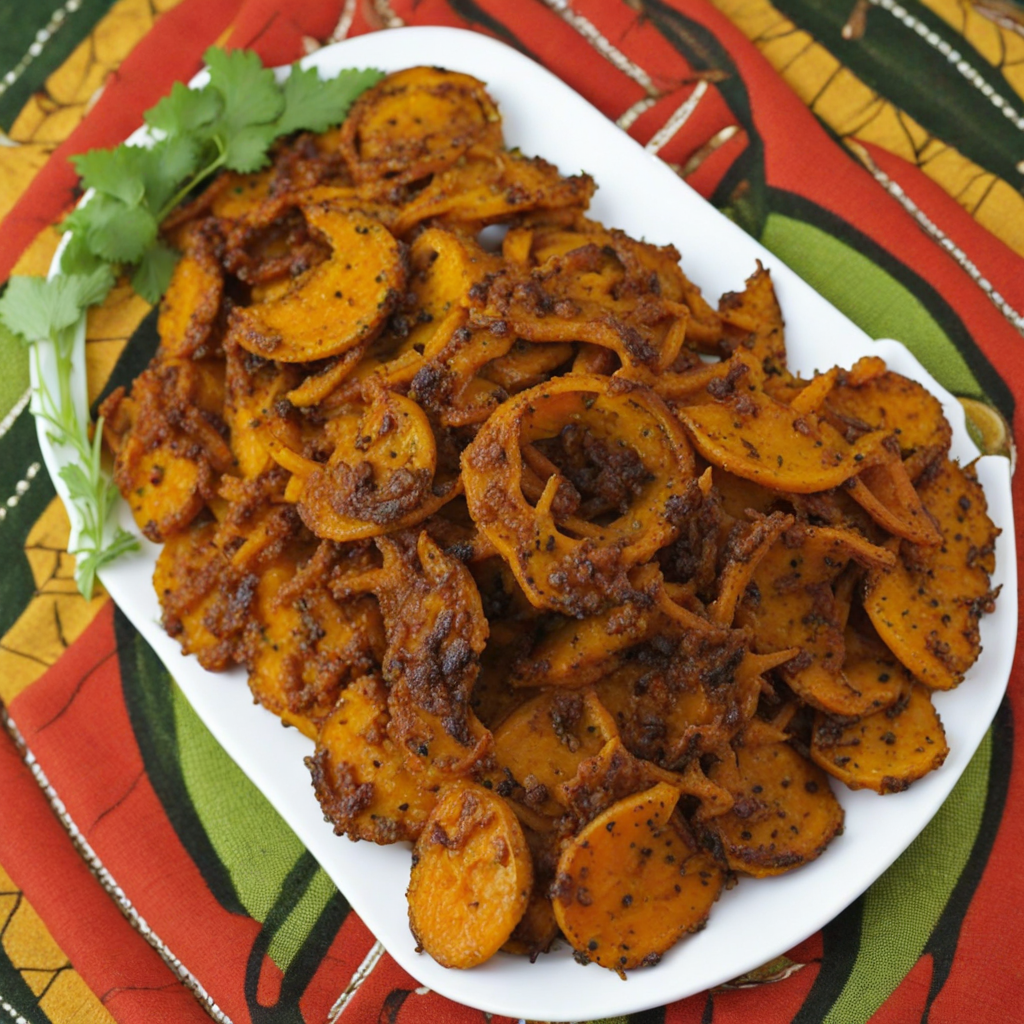Ifiriti
Ifiriti is a traditional Rwandan dish that offers a delightful exploration of flavors and textures. This unique food is essentially deep-fried cassava, which is a staple in many African cuisines. The process begins with cassava roots, which are peeled, boiled, and then sliced into thin pieces before being fried until golden and crispy. The exterior achieves a satisfying crunch while the inside remains soft and slightly chewy, making it a delightful contrast that excites the palate. Often enjoyed as a snack or side dish, Ifiriti is a versatile accompaniment to various Rwandan meals or can be savored on its own with a sprinkle of salt or a dash of chili for those who enjoy a little heat. The taste of Ifiriti is subtly nutty, enhanced by the natural sweetness of the cassava. This root vegetable absorbs flavors beautifully, allowing it to pair well with different condiments and dips. In Rwanda, it's common to serve Ifiriti alongside spicy sauces or stews, which elevate its flavor profile and make each bite a new experience. The dish often reflects the communal aspect of Rwandan dining, where sharing food is an integral part of the culture, making Ifiriti not just a meal, but a way to connect with others. Ifiriti is not only delicious but also embodies the essence of Rwandan cuisine, which is characterized by its use of locally sourced ingredients and traditional cooking methods. As more people discover Rwandan dishes, Ifiriti stands out as a must-try for anyone looking to explore the rich culinary landscape of the region. Its simple yet satisfying nature allows it to shine both in casual gatherings and festive occasions, making it a beloved choice among locals and visitors alike.
How It Became This Dish
Ifiriti: A Journey Through Rwandan Culinary Heritage #### Origins of Ifiriti Ifiriti, the Rwandan version of fried cassava, is more than just a staple food; it embodies the rich tapestry of Rwandan culture and history. The name "Ifiriti" is derived from the French word "friture," which means fried food. This culinary tradition has its roots in the agricultural practices of the Rwandan people, who have cultivated cassava for centuries. Cassava, a drought-resistant tuber, became a fundamental crop in the region, thriving in the tropical climate of Rwanda, which is characterized by its fertile volcanic soil. Historical records suggest that cassava was introduced to Africa from South America through the transatlantic slave trade and later spread to various regions of the continent. In Rwanda, it quickly adapted, becoming a vital source of carbohydrates for the local population. The cultivation of cassava flourished, particularly in the 19th and early 20th centuries, as communities began to incorporate it into their daily diets. #### Cultural Significance Ifiriti holds a special place in Rwandan society, reflecting not only the agricultural practices of the people but also their communal values. It is commonly served during celebrations, family gatherings, and social events, symbolizing hospitality and togetherness. The act of sharing Ifiriti, often accompanied by a variety of sauces or spicy dips, fosters a sense of community and belonging. In Rwandan culture, food is deeply intertwined with identity and heritage. Ifiriti is often served alongside other traditional dishes such as Isombe (cassava leaves cooked with ground peanuts) and Ugali (a stiff porridge made from maize flour). These meals are not just sustenance; they tell stories of the land, the people, and their enduring connection to their culinary practices. Moreover, Ifiriti is often associated with important rituals and ceremonies. For instance, during weddings and cultural celebrations, serving Ifiriti signifies the joy of bringing people together and sharing in abundance. It also serves as a reminder of resilience, as cassava's ability to thrive in adverse conditions parallels the Rwandan people's own resilience through historical challenges. #### Preparation and Variations The preparation of Ifiriti is both an art and a science, passed down through generations. Traditionally, cassava roots are harvested, peeled, and boiled to soften them before being cut into fryable pieces. The key to achieving the perfect Ifiriti lies in the frying technique; the pieces are immersed in hot oil until they turn golden brown and crispy on the outside while remaining tender inside. While the traditional method remains beloved, variations have emerged over time. Modern adaptations may include seasoning the cassava before frying or serving it with innovative dips inspired by global culinary trends. In urban areas, street vendors have popularized Ifiriti as a fast food option, serving it with an array of accompaniments like spicy chili sauce or avocado salad, appealing to younger generations and tourists alike. #### Development Over Time The evolution of Ifiriti mirrors the broader changes within Rwandan society. Following the tragic events of the 1994 Genocide against the Tutsi, Rwanda experienced significant social and economic shifts. The rebuilding of the nation involved not only infrastructure and governance but also a revival of cultural practices, including culinary traditions. Efforts to promote local foods like Ifiriti have been part of a larger movement to restore national pride and identity. In recent years, as Rwanda has embraced a focus on sustainability and local food production, Ifiriti has found a renewed place in the national consciousness. Agricultural initiatives have encouraged farmers to cultivate cassava as a cash crop, which has helped to bolster local economies. Furthermore, the government has promoted traditional foods in schools and public institutions, emphasizing the importance of nutrition and cultural heritage. The globalization of food culture has also impacted the perception of Ifiriti. With the rise of social media and food tourism, traditional dishes like Ifiriti are gaining recognition beyond Rwanda's borders. Chefs and food enthusiasts are increasingly interested in exploring and sharing authentic Rwandan cuisine, leading to culinary festivals and events that celebrate traditional foods. #### Challenges and Future Prospects Despite its cultural significance, Ifiriti faces challenges in a rapidly changing world. Urbanization and globalization have led to shifts in dietary habits, with many young people gravitating towards fast food and processed options. This trend poses a risk to traditional dishes and the agricultural practices that sustain them. However, there is hope for the future of Ifiriti. As awareness of the health benefits of traditional diets grows, there is a renewed interest in local foods. Initiatives aimed at promoting food heritage and sustainable agriculture are gaining traction in Rwanda, encouraging younger generations to appreciate and embrace their culinary roots. Furthermore, the rise of culinary tourism presents an opportunity for Ifiriti to shine on the international stage. Travelers seeking authentic experiences are increasingly drawn to local cuisines, and Ifiriti, with its rich flavors and cultural significance, can serve as a gateway to exploring Rwanda's heritage. #### Conclusion Ifiriti is not just a dish; it is a symbol of Rwanda's resilience, cultural identity, and communal spirit. From its origins as a vital agricultural crop to its place in contemporary cuisine, Ifiriti encapsulates the journey of a nation. As Rwandans continue to celebrate and innovate around their culinary traditions, Ifiriti stands as a testament to the enduring power of food to connect people, tell stories, and foster a sense of belonging. In the tapestry of Rwandan culture, Ifiriti remains a vibrant thread, weaving together the past, present, and future of this beautiful nation.
You may like
Discover local flavors from Rwanda







